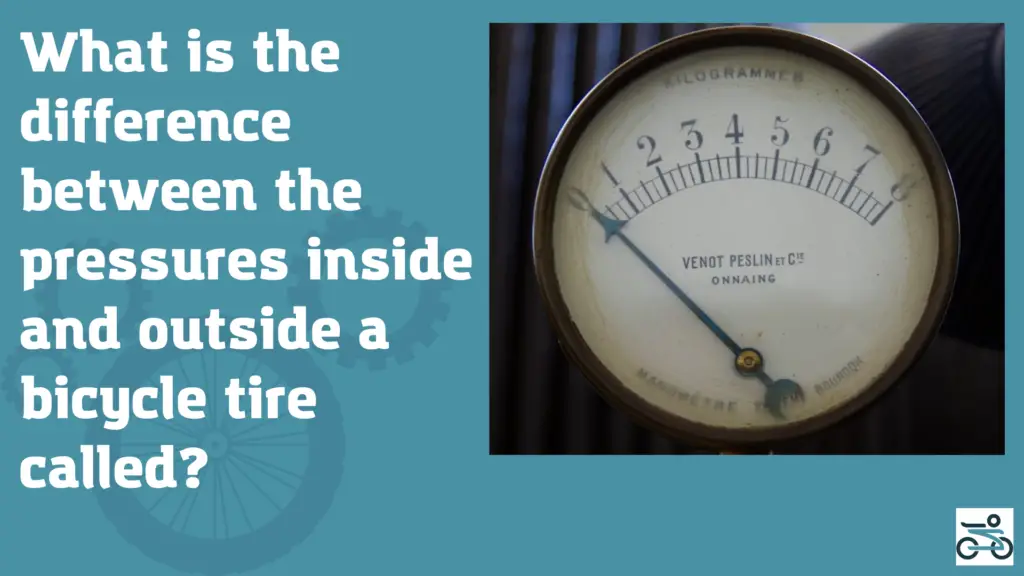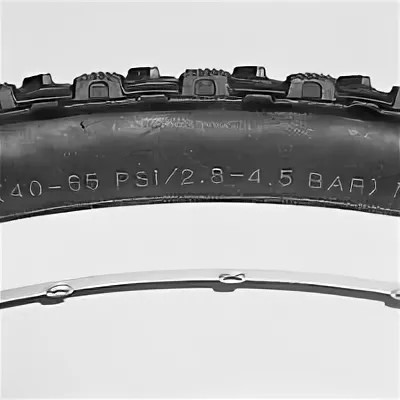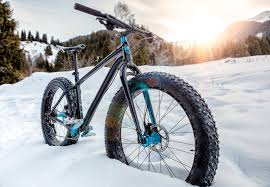
The relationship between the pressures inside and outside a bike may be something you’re curious about.
So, what is the difference between the pressures inside and outside a bicycle tire called? It’s what we refer to as the gauge pressure. It is measured by Pounds Per Square Inch (PSI).
WHY DO YOU NEED TO KNOW INFORMATION ABOUT TIRE PRESSURE
When inflating the wheels, you should always take into account the terrain or surface you will be riding on. If a walk is planned on an asphalt road, the pressure of the bicycle tires should be close to the maximum permissible value. Elastic wheels on a flat surface will ensure smooth rolling and high speed of movement.
For a cross-country trip with dirt tracks, it is better to make the pressure in the bicycle tires medium to allowable in order to travel long distances in comfort and convenience without any problems. At high pressure, the wheel’s adhesion to the road will be minimal, accordingly, all potholes, pebbles, bumps on the road will be sensitive. And with deflated tires, the probability of wheel damage or tube puncture increases.
Information about tire pressure gives an advantage in cycling trips:
- An over-inflated tire is prone to tears or punctures on the rim, especially at high speed;
- too low pressure can serve as a reason for a tire breakdown in the form of a “snake bite” when hitting even a small obstacle;
- reduced pressure softens bumps on the road, increases shock absorption properties;
- the pressure is normal at the lower limit, increases traction in off-road or rough terrain conditions;
- normal pressure at the upper limit, in the conditions of an asphalt track, gives high speed, while saving the strength of the cyclist.
HOW IS TIRE PRESSURE MEASURED
Air leaves the wheel gradually, through the pores in the rubber. During 2-3 weeks, the pressure decreases by 0.1-0.2 atmospheres, but you cannot determine it with your fingers. The exact value at any time will help determine the pressure gauge that every cyclist should have in his arsenal. With its help, it is easy to measure the pressure level in bicycle tires with minimal error. A pump with a pressure gauge (floor or manual) will become an indispensable assistant for lovers of cycling.
There are three standard values in which the pressure in the bicycle wheels is measured.
- Bar (or atmosphere) / BAR
- Kilopascals / kPa
- Pounds per square inch / PSI
All these quantities can be easily converted into each other, knowing their ratio:
1 BAR = 1 atmosphere = 100 kPa = 14.504 PSI
All these units are used in different countries, by different manufacturers. For residents of Central and Eastern Europe, the change in bars is more common, as this unit is clearly associated with the pressure of the 1st Earth atmosphere at ocean level. In America and Western Europe, a popular unit is PSI, as pounds and inches are actively used in measurements. Pascal is the least used unit of measurement, but the most modern. Some bicycle manufacturers write data on the permissible pressure values in all three systems on the wheels.
MARKING ON BICYCLE TIRES

On the sidewall of the tire, manufacturers indicate how many atmospheres the bicycle wheels should be inflated to. The range is indicated, within which the owner of the bicycle determines the required values, depending on the specific factors of riding it. Values in the range are marked from min to max, in two or all three dimensions. Numbers up to 10 are atmospheres (or BAR), tens-hundredths are PSI, and six-digit values or prefixed with “k” / kilo are Pascals.
When inflating a tire, you must strictly follow the manufacturer’s recommendations and try not to go beyond both the minimum and maximum values of the pressure level indicated on the tire. Moreover, it is better to leave a small margin in 02-05 BAR, both in one direction and in the other, so that the tire does not tear.
AIR TEMPERATURE

Air temperature affects the pressure level in bicycle tires – in hot, sunny weather, the pressure inside the bicycle chamber will increase without additional inflation. And, on the contrary, on cold winter days, a decrease in tire pressure is quickly felt due to the low temperature. So, when going for a bike ride in the cold season, you need to adjust the pressure indicators a little higher than usual, and in the summer heat, lower the air a little.
WEIGHT OF CYCLIST
It is important to consider the load on the bicycle created by the weight of the cyclist himself, especially the fact that most of it falls on the rear wheel. Therefore, the degree of its pumping should be slightly higher than the front one, the optimal difference is 10%.
To calculate what the optimal pressure should be in the tires of a bicycle, given the weight of its rider, you can use the table:

Tire inflation will directly depend on the weight of the cyclist. The larger it is, the more atmospheres need to be pumped into the bicycle wheel. However, it should always be remembered that overloading the bike with over-inflated wheels at the same time can cause the rim to twist into a figure eight or the tire to burst.
The article about tools “The best bike tool kits for making repairs” here.


